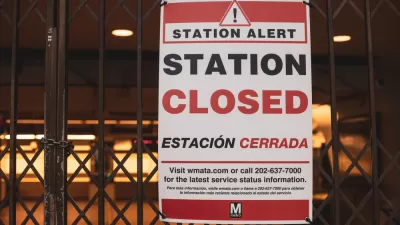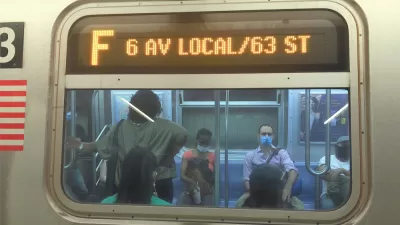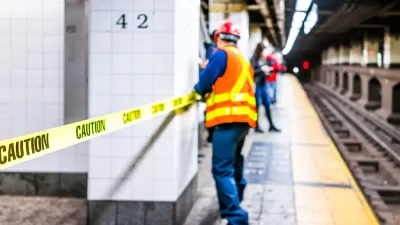The stakes in the economic stimulus package under consideration on Capitol Hill this week are incredibly high.

New York MTA chief executive Patrick J. Foye lays out the stakes of the effects of the pandemic on the fiscal health of transit agencies around the country in an article by Justin George, Lori Aratani, and Meagan Flynn.
“This is a once-in-100-years fiscal tsunami that the MTA and our counterpart transit agencies across the country, including in Washington, D.C., are facing,” MTA chief executive Patrick J. Foye said. “This is not a negotiating tactic. It’s not a stunt. It is kind of grim reality.”
According to the article, transit agencies "have been warning for months about enormous deficits, but as they begin announcing proposed cuts, transit leaders say, people are realizing how intertwined public transportation is with their local economies and lives."
The article offers the most comprehensive collection of bad news regarding budget deficits and reduced operation to date. For a sample of the carnage, the article lists the Chicago Transit Authority's (CTA) budget deficit is listed as $375 million. The Bay Area Rapid Transit System (BART) faces a $200 million shortfall through July 2022. For the Washington Metropolitan Transit Authority (Metro) it's a $500 million gap in next year's operating budget.
According to the article, recently announced plans for massive service reductions and layoffs all over the country, including New York City and Washington, D.C., have motivated some members of Congress to put together a stimulus package that includes $45 billion for transportation (of which, only $15 billion is set aside for transit agencies).
"It would be stupidity on steroids if Congress left for Christmas without doing an interim package as a bridge," is the soundbite in the article from Sen. Mark R. Warner (D-Va.).
To further drove the point home of how much harm these proposed cuts to transit operations could do, the article includes statistics and anecdotes—the former reveal the tremendous damage that reductions like those proposed in D.C. and New York would do to the regional and national economies; the latter include a lot of elected officials in different positions expressing dismay at the prospects facing the country's transit systems.
Still, it's unclear if this mountain of evidence will be enough to sway Congress and the trump administration to action.
Paul P. Skoutelas, president of the American Public Transportation Association, is cited in the article calling for more than double the proposed spending levels in the current version of the stimulus package. Congressional aides are cited in the article saying the details of the package are fluid, and the bill "received a cool reception Tuesday from the White House…"
FULL STORY: Transit system service cuts proposed in Congress’s backyard elicit calls for more funding

Alabama: Trump Terminates Settlements for Black Communities Harmed By Raw Sewage
Trump deemed the landmark civil rights agreement “illegal DEI and environmental justice policy.”

Study: Maui’s Plan to Convert Vacation Rentals to Long-Term Housing Could Cause Nearly $1 Billion Economic Loss
The plan would reduce visitor accommodation by 25% resulting in 1,900 jobs lost.

Why Should We Subsidize Public Transportation?
Many public transit agencies face financial stress due to rising costs, declining fare revenue, and declining subsidies. Transit advocates must provide a strong business case for increasing public transit funding.

Paris Bike Boom Leads to Steep Drop in Air Pollution
The French city’s air quality has improved dramatically in the past 20 years, coinciding with a growth in cycling.

Why Housing Costs More to Build in California Than in Texas
Hard costs like labor and materials combined with ‘soft’ costs such as permitting make building in the San Francisco Bay Area almost three times as costly as in Texas cities.

San Diego County Sees a Rise in Urban Coyotes
San Diego County experiences a rise in urban coyotes, as sightings become prevalent throughout its urban neighbourhoods and surrounding areas.
Urban Design for Planners 1: Software Tools
This six-course series explores essential urban design concepts using open source software and equips planners with the tools they need to participate fully in the urban design process.
Planning for Universal Design
Learn the tools for implementing Universal Design in planning regulations.
Smith Gee Studio
Alamo Area Metropolitan Planning Organization
City of Santa Clarita
Institute for Housing and Urban Development Studies (IHS)
City of Grandview
Harvard GSD Executive Education
Toledo-Lucas County Plan Commissions
Salt Lake City
NYU Wagner Graduate School of Public Service





























